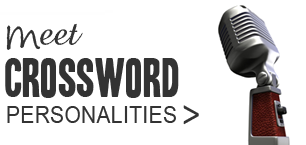
The trend is popular with cryptic crosswords as well. There are many digests online that tell you how to solve cryptic crosswords in a few bullet points. Writing such an article is a difficult feat; when you shrink a lot of information into small space, you run the risk of omitting important details or oversimplifying which leaves the reader ill-informed.
LiveMint published this recently: Expert Cheat Sheet: How to crack The Times’ Cryptic Crossword. While it's heartening to find cryptic crosswords being given importance in an Indian paper, I found the article rather confusing. For starters, it talks about the "Times" crossword throughout without ever explaining which Times. In an article for cryptic crossword beginners in an Indian paper, Times => Times of UK is essential information. I asked a couple of non-solver friends which paper they thought it meant - they assumed the "Times" was Times Of India.
My main objection is to the sweeping generalisations in the article. In the world of cryptic crosswords, hardly anything is true "always".
There are always two ways to solve a clue.
Not true for a cryptic definition clue.
The meaning of the answer to a Times clue is always given in the first or the last couple of words.
Not true for a clue like:
Times 24508: Stink as this gun is brought to church (4) STEN
The combo: These are very common; part anagram, part word substitution.
There are many more types of combination clues, many that do not involve anagrams.
There’s always one clue in the puzzle in which the answer is literally written into the clue- usually spanning two or three words.
Some puzzles may not have a hidden word answer at all.
If in the ten steps the author sets out to list clue types, then the prioritisation must be logical. In this article, there seems to be no rationale behind picking some clue types and omitting others. The charade and reversal clue types, very common devices in the Times, find no mention here.
The oddest thing is that this article focuses solely on the Times crossword and totally ignores its own paper's Mint crossword to which all those ten tips apply equally well.
Recommended "Cheat Sheets"
Here are a few short guides that I think do a very good job of giving quick solving tips:
- What cryptic solvers need to know – in one page: Champion Times solver Peter Biddlecombe's advice to new solvers is one of the best-written short guides online, packing a wealth of knowledge in that one page.
- The Guardian's Guide For Beginners: A six-step guide that wisely steers clear of listing individual clue types. Instead it stresses on the important of identifying the definition and the SI, and of ignoring the surface.
- Tim Moorey's list of Clue Types: A handy single-page PDF that offers a bird's eye view of cryptic clue types with examples and tips to identify them. Written by Times setter Tim Moorey.
Bear in mind that no guide will do a magic makeover for you. Solving guides are, at best, tools for understanding. If you want to solve a crossword like the Times in a few minutes, the only way to reach that stage is regular, dedicated solving.
Related Posts:
- Tackling Cryptic Crosswords: A 7-Step Guide for Beginners
- Clue Writing Contests
- Can a computer program write cryptic clues?
If you wish to keep track of further articles on Crossword Unclued, you can subscribe to it in a reader via RSS Feed. You can also subscribe by email and have articles delivered to your inbox, or follow me on twitter to get notified of new links.








 Follow on Twitter
Follow on Twitter Join us on Facebook
Join us on Facebook Get RSS
Get RSS

0 comments
Post a Comment